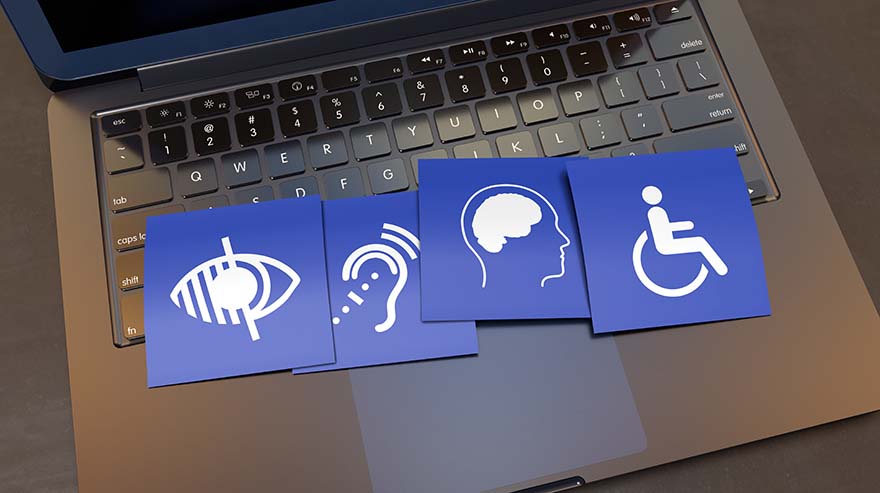Spring is beginning with students and faculty members alike feeling frazzled and distracted. We are trying to be bright-eyed and bushy-tailed, but after two years of the pandemic, the Marshall fire, the December mass shooting in Denver and upheavals in housing, employment and health for many folks, we are struggling to bring our best selves to the classroom.
Way back in spring 2019, which the calendar says was only three years ago but may feel like a lifetime ago, we offered SIP 9.7 (https://sites.msudenver.edu/sips/sip-9-7-the-30-second-deep-breathe/) on spending 30 seconds at the beginning of a class having everyone take a few deep breaths. What was helpful in the seemingly simpler days of spring 2019 to enable faculty members and students to shake off the distractions of the world outside the classroom and focus on the class may be a way for us to bring more of our best selves.
You may be rolling your eyes and thinking, “Another mindfulness technique? Is this hippy-dippy stuff really appropriate in a rigorous learning environment? We’re all adults here – do we really need to do these silly things to get down to the business of learning?”
Take a SIP of this: opening up to grounding techniques
Those are the exact thoughts one member of the SIP Squad had recently when they entered a professional-development event being conducted remotely. The facilitator began by saying, “Let’s take a moment to ground in. Close your eyes; take a deep breath; shake your arms and legs a bit to release the tension. Give yourself permission to let everything else go for the duration of this workshop.” The SIP Squad member felt their eyes rolling involuntarily and was about to spend the 30 seconds everyone else took to “ground in” by scrolling through social media on their phone … and then that SIP Squad member thought, “Oh, what the heck. I’ll try it.” They put down their phone; they closed their eyes; they took the deep breath; they shook out their arms and legs to release the tension; they gave themself permission to let everything else go for the duration of the workshop. … And you know what? That SIP Squad member became a believer in grounding techniques.
A grounding technique is a strategy that helps an overwhelmed person connect with the here and now. Faculty members and students who use a grounding technique will likely find it easier to table their anxieties and worries and focus on teaching and learning. We enter the physical or virtual classroom with all sorts of distractions in our heads. Some have anxieties connected to the pandemic, perhaps about a symptom being experienced (Is it a cold or Covid? Does the negative test result mean I don’t have Covid or does it mean I tested too early? Where did I get it? Whom have I been in contact with?). Others may be worried about perennial concerns (How am I going to pay that bill? Why did they say/do that to me? What am I going to do about X?). Even folks with no worries (do those people really exist?) have social, work and family lives beyond the classroom that pull their attention away. Grounding techniques can help us check that baggage for a while and focus in on the present moment in the classroom.
For the science behind the magic of a few deep breaths and tips on how to integrate 30 seconds of deep breathing into your classes, read SIP 9.7 (https://sites.msudenver.edu/sips/sip-9-7-the-30-second-deep-breathe/). Here are some other grounding techniques that work well in face-to-face and online learning environments:
- Invite everyone to stretch. This can be done sitting or standing. Folks can reach their hands up and their legs out or down, or they can bend or stretch from side to side. This gets blood flowing and can help sleepy folks feel more alert.
- Read a guided visualization. This can help folks release anxiety and feel calm. There are many guided visualization scripts (https://www.innerhealthstudio.com/visualization-scripts.html) available on the internet.
- Ask students to notice their physical surroundings. Talk them through becoming aware of the chair under their bum, how the floor feels under their feet, how the keyboard feels under their fingers or how their writing tool feels in their hand. This helps people focus on their immediate environment and helps pull them out of their distracting thoughts.
Still not convinced that spending 30 seconds of class time on one of these strategies is worthwhile? Be like the SIP Squad member and try one. Give it 30 seconds. We’ll wait. …
How did that feel? We bet you feel a little more focused, a little more relaxed, a little clearer.
Still thirsty? Take another SIP of opening up to grounding techniques:
- “Understanding Trauma: Learning Brain versus Survival Brain” (https://www.youtube.com/watch?v=KoqaUANGvpA) (video)
- “Promoting the Inclusion of Mindfulness and Contemplative Practices in the College Classroom” (https://journals-sagepub-com.aurarialibrary.idm.oclc.org/doi/full/10.1177/2373379920925849?utm_source=summon&utm_medium=discovery-provider ) by Heather Vilvens (peer-reviewed journal article)
- “Why Relaxation Is So Important” (https://www.wellbeingpeople.com/2019/04/15/why-relaxation-is-so-important/ ) by Justine Clarabut (article)
- “The Science of Mindfulness” (https://www.mindful.org/the-science-of-mindfulness/) (article)
- “The Effectiveness of Combat Tactical Breathing as Compared with Prolonged Exhalation” (digital article) by Rottger, Theobald, Abondroth, and Jacobsen (peer reviewed journal article)
- “Mindfully Teaching in the Classroom: A Literature Review” (https://files.eric.ed.gov/fulltext/EJ995268.pdf) by Albrecht, Albrecht, and Cohen (peer reviewed journal article)
- “Introduction to the Special Issue Mindfulness in the schools -Historical Roots, Current Status, and Future Directions” (https://onlinelibrary.wiley.com/doi/abs/10.1002/pits.21981 ) by Renshaw and Cook (introduction to journal special issue)
- “Mindfulness: The Next Frontier in Battling Officer Stress” (https://cops.usdoj.gov/html/dispatch/12-2017/Mindfulness_Next_Frontier_of_Battling_Officer_Stress.html ) by Kim (article)
- Vanderbilt University’s Center for Teaching offers excellent resources on using mindfulness techniques in the classroom (https://cft.vanderbilt.edu/guides-sub-pages/contemplative-pedagogy/).
- University of Hawaii’s Hawaii Community College also offers suggestions for using mindfulness techniques in classes (https://www.hawaii.hawaii.edu/mental-wellness/fs-resources/mindfulness).
Visit the Well at http://sites.msudenver.edu/sips/ for more great ideas and resources for Strong Instructional Practices in your higher-education classroom.








